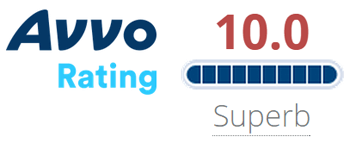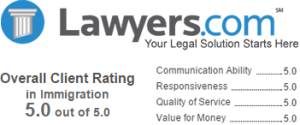Q1. I’ve heard that a new regulation was recently issued by the INS to permit I-140s and I-485s to be submitted at the same time. Is this correct?
A. Yes. On July 31, 2002, the INS issued a regulation which allows I-140s and I-485s to be submitted simultaneously as long as the priority date is current. At the present time, all employment-based priority dates are current.
Q2. When will the new regulation become effective?
A. The new regulation became effective on July 31, 2002.
Q3. Does the regulation apply to all five employment-based categories?
A. No. Because I-140s are only used to petition persons under the EB-1, EB-2 and EB-3 categories, the regulation applies solely to these categories. It does not apply to the EB-4 special immigrant category since the petition used there is form I-360. Similarly, it does not apply to the EB-5 investor category since a form I-526 petition is used in such cases.
Q4. What if the I-140 has already been filed, and is pending?
A. The regulation allows an I-485 application to be filed together with proof that the I-140 has been filed. The best proof of this is the I-797 filing receipt issued by the INS.
Q5. May the I-485 be filed only for the principal, or may additional I-485s be submitted for other family members?
A. I-485s may be submitted for the principal, the spouse and any unmarried children under 21 years of age.
Q6. May applications for employment authorization documents (EADs) and advance paroles be submitted with the I-485s?
A. Yes, an EAD application may be submitted using form I-765 while an application for an advance parole may be submitted using form I-131. Make certain that you do not apply for an advance parole for a person who may be barred from returning to the United States.
Q7. If I am currently under deportation/removal proceedings, do I file form I-485 with the INS?
A. No. In this case, you must either submit form I-485 with the Immigration Judge, or, if your case is on appeal, with the Board of Immigration Appeals (BIA). The mere filing of form I-485 with the BIA does not result in a stay of deportation. If applicable, make sure that form I-485 and accompanying documents are submitted as part of a Motion to Reopen, Reconsider or Remand.
Q8. What is the principal benefit of the ability to submit form I-485 concurrently with form I-140?
A. It allows the principal and family members to obtain work and travel privileges without having to wait for form I-140 to be approved.
Q9. How do the concurrent filing regulations relate to the rest of the immigration law?
A. In many ways. For example, a concurrent filing may allow a person to avoid accruing unlawful presence in the U.S.
If a person is in his final year of H-1B status and an application for alien labor certification is still pending with the Labor Department, he may apply to utilize concurrent filing to avoid losing his working status. If he may qualify as an EB-1 priority worker or for a national interest waiver under EB-2, he should submit his I-485/765 simultaneously with an I-140 and be granted an EAD.
The regulation also allows the 180-day portability period under AC-21 to start earlier.
Q10. Is the regulation final?
A. No. It is subject to a comment period that ends on September 30, 2002. You should submit written comments to the Director, Policy Directives and Instructions Branch, Immigration and Naturalization Service, 425 I Street, NW, Room 4034, Washington, DC 20536. To ensure proper handling, please reference INS No. 2104-00 on your correspondence. You may also submit comments electronically to the INS at insregs@usdoj.gov When submitting comments electronically, please include the INS No. 2104-00 in the subject box.
Skype Consultations Available!![]()









